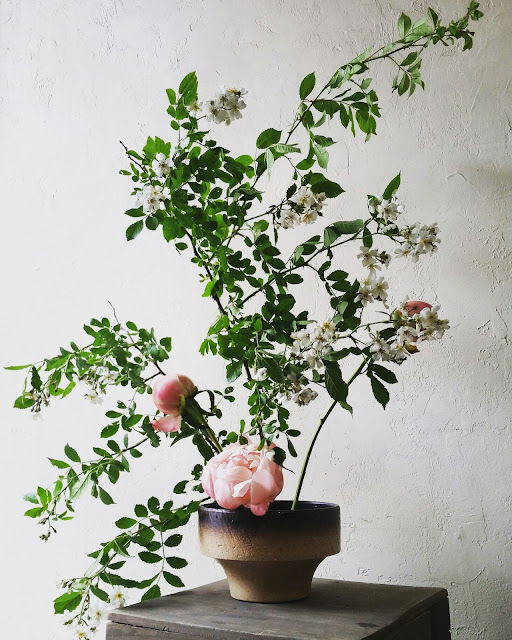Inspiration: botanical names and illustrations ...
Some maidenhair ferns that I picked on a long-ago nature walk. I had scanned them because I like the light and dark effects created by this process, especially with anything botanical ...
 Adiantum capillus-veneris (maidenhair fern by Rachelle Soucy)
Adiantum capillus-veneris (maidenhair fern by Rachelle Soucy)

However, I found that the Foxglove's common name, it's meaning, and history are not only interesting, but quaint. Wells (1997) writes:
 (Foxglove - photo courtesy of Old Varieties)
(Foxglove - photo courtesy of Old Varieties)
 Adiantum capillus-veneris (maidenhair fern by Rachelle Soucy)
Adiantum capillus-veneris (maidenhair fern by Rachelle Soucy)
I have this book at my side at all times: 100 Flowers and How They Got their Names by Diana Wells. How did flowers get their names, I would like to know. After all, weren't names designed to enhance the matter in which they referred? I wish this always held true - I am finding that most botanical and family names of flowers are from Greek origin with mythological stories to match; which is interesting. Whereas the common names are often named after botanists and not relating to the flower's characteristics or habitat or cultural context; which isn't so interesting.

However, I found that the Foxglove's common name, it's meaning, and history are not only interesting, but quaint. Wells (1997) writes:
Foxgloves, native to Britain and Europe, have always been considered fairy flowers. There are dozens of fairy names for them, as well as some more sinister ones like the Gaelic ciochan nan cailleachan marblia, or "dead old woman's paps". The name "foxglove" comes from the Old English foxes glofa, and the flowers do look like the fingers of a glove. Foxgloves tend to grow on woody slopes where foxes' burrows are often found. Foxes are wily creatures who may have needed magical gloves when they slunk out of the shadows and spirited away chickens... William Curtis, whose illustration of a foxglove was the frontispiece to Withering's book, compared the flowers to spotted wings of butterflies, which "smile at every attempt of the Painter to do them justice"... (77-78)
 (Foxglove - photo courtesy of Old Varieties)
(Foxglove - photo courtesy of Old Varieties)





Comments
Post a Comment